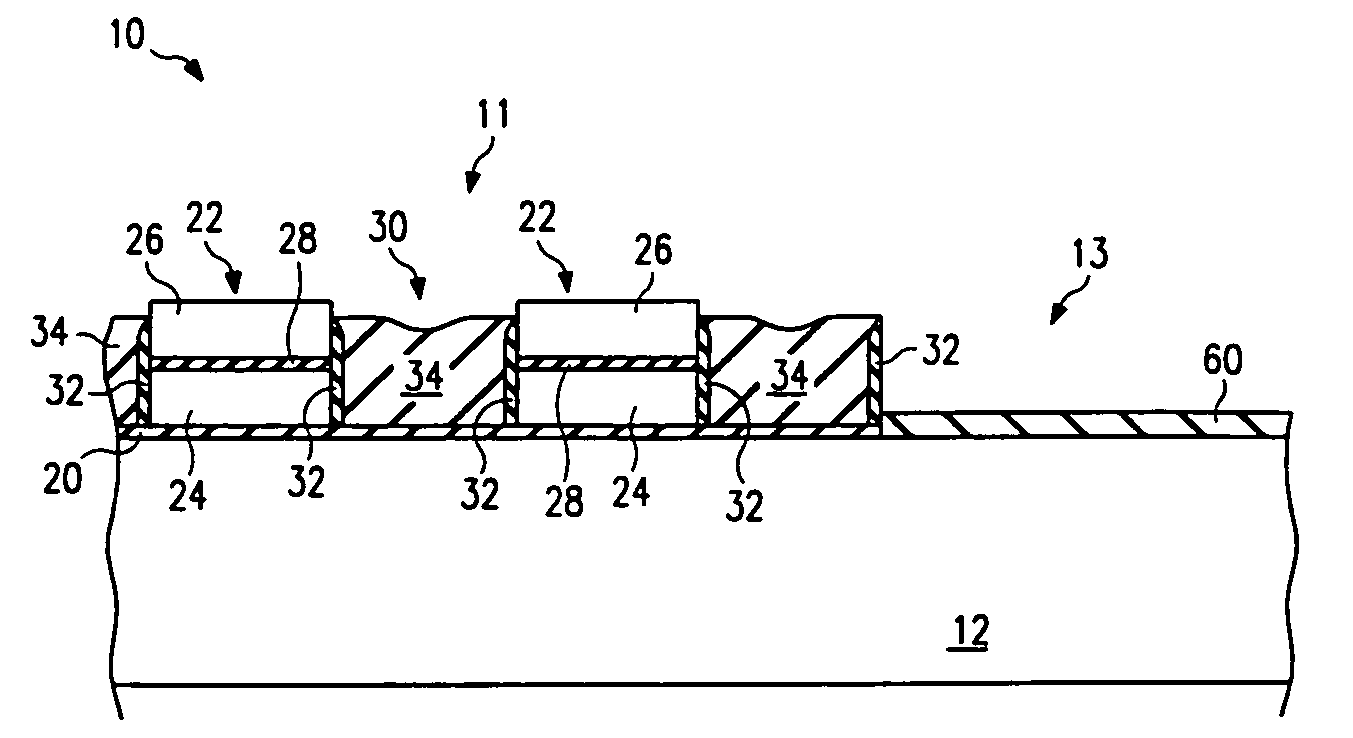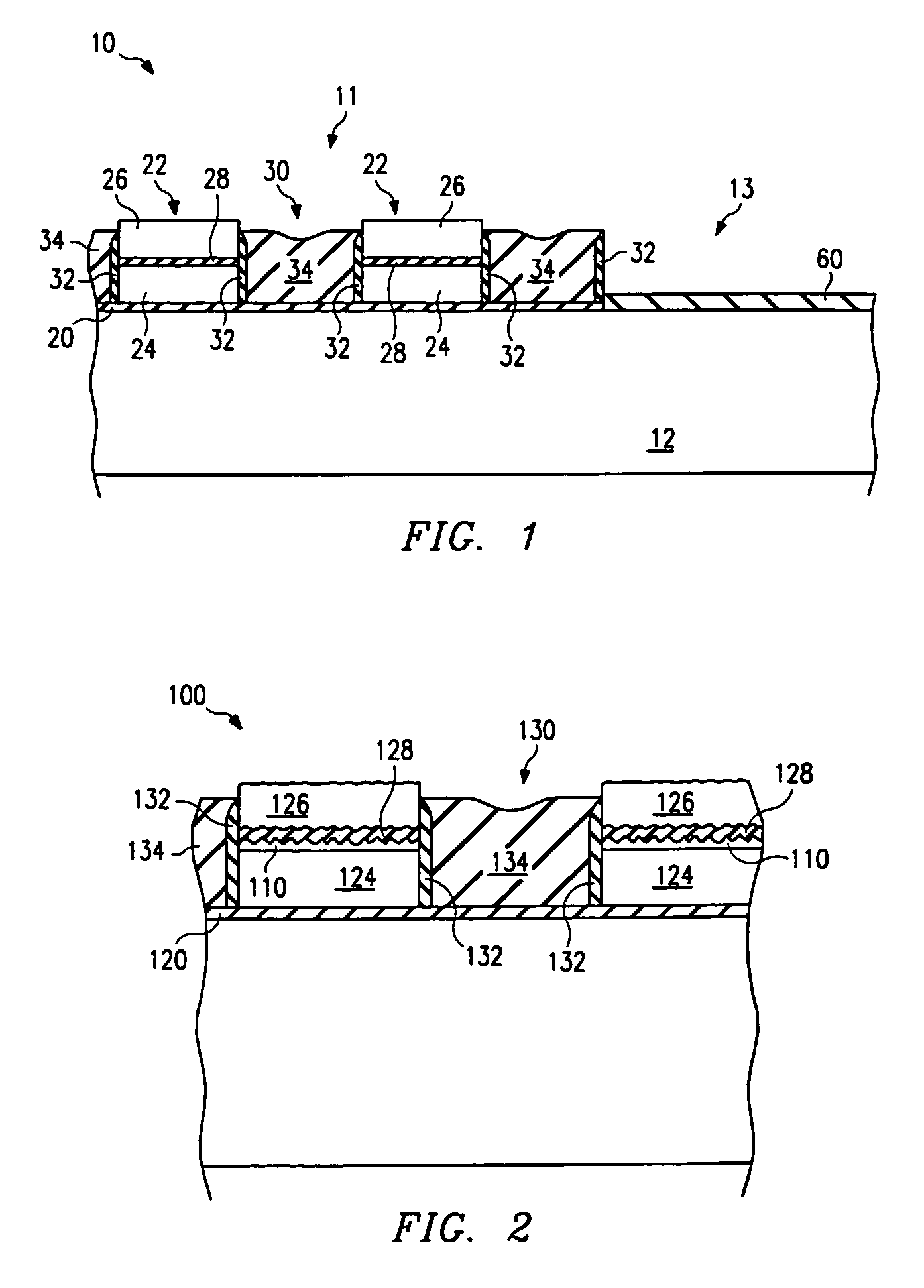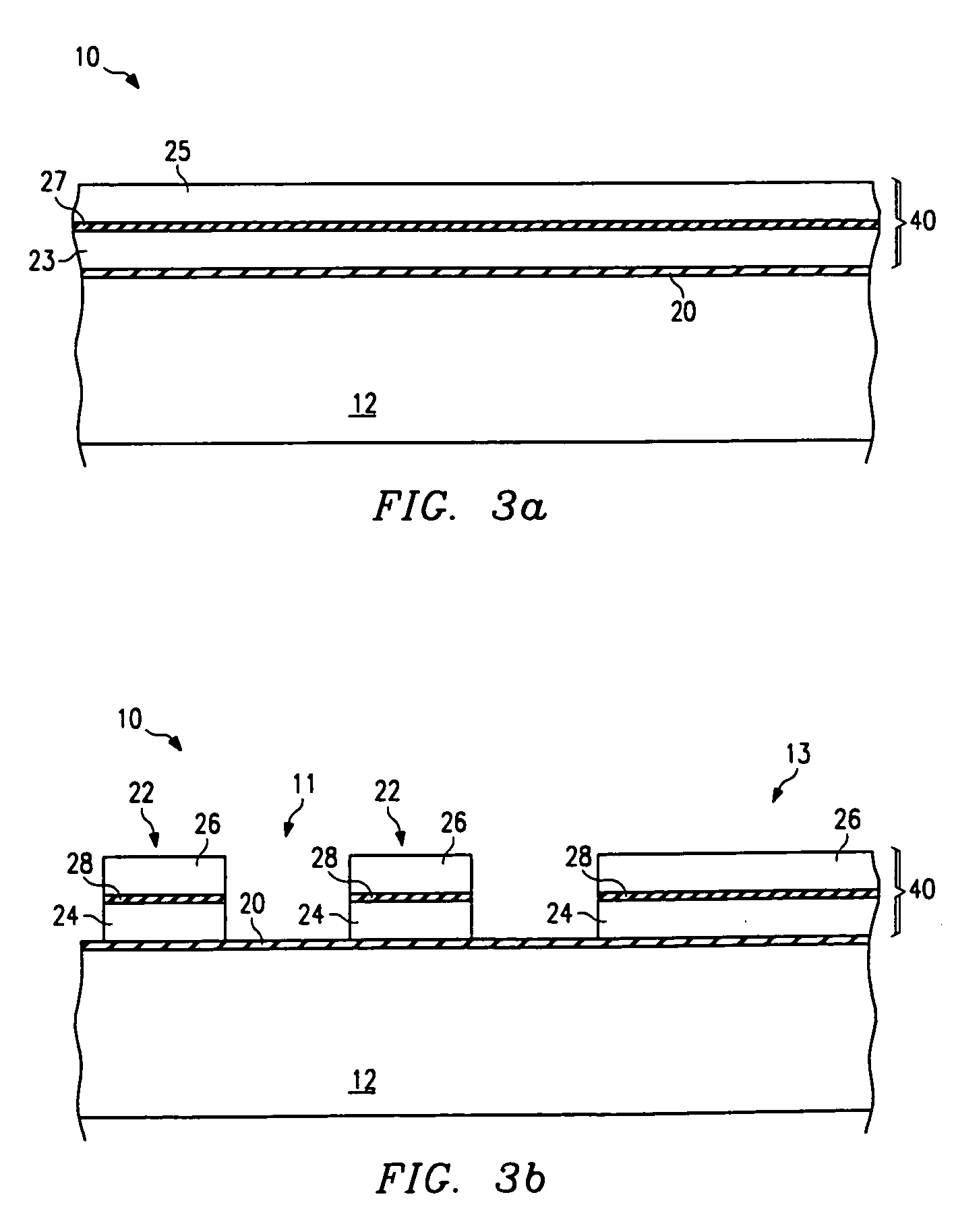Integrated circuit having independently formed array and peripheral isolation dielectrics
a technology of isolation dielectrics and integrated circuits, which is applied in the field of integrated circuits with independently formed arrays and peripheral isolation dielectrics, can solve the problems of intolerant to low levels, inability to infuse unique characteristics into separate isolation dielectrics, and inability to meet diverging specifications of memory cells and peripheral transistors contemporaneously formed isolation dielectrics, etc., to achieve the effect of eliminating overlap, facilitating the creation of floating gates, and reducing cell siz
- Summary
- Abstract
- Description
- Claims
- Application Information
AI Technical Summary
Benefits of technology
Problems solved by technology
Method used
Image
Examples
Embodiment Construction
[0017]FIG. 1 is a cross-sectional view of a portion of an integrated circuit 10 having independently formed array and peripheral isolation dielectric regions according to the teachings of the present invention. Integrated circuit 10 comprises a semiconductor substrate 12. A first dielectric layer 20 may be disposed outwardly from an array region 11 of integrated circuit 10. A peripheral dielectric layer 60 may be disposed outwardly from a peripheral region 13 of integrated circuit 10. First dielectric layer 20 and peripheral dielectric layer 60 may comprise, for example, layers of oxide. Other dielectric materials besides oxide may be used to form first and peripheral dielectric layers 20 and 60. First dielectric layer 20 may form a tunnel oxide layer for a floating gate array of memory cells subsequently formed in array region 11. Peripheral dielectric layer 60 may form a gate oxide layer for peripheral transistors subsequently formed in peripheral region 13.
[0018]Gate stacks 22 ar...
PUM
 Login to View More
Login to View More Abstract
Description
Claims
Application Information
 Login to View More
Login to View More - R&D
- Intellectual Property
- Life Sciences
- Materials
- Tech Scout
- Unparalleled Data Quality
- Higher Quality Content
- 60% Fewer Hallucinations
Browse by: Latest US Patents, China's latest patents, Technical Efficacy Thesaurus, Application Domain, Technology Topic, Popular Technical Reports.
© 2025 PatSnap. All rights reserved.Legal|Privacy policy|Modern Slavery Act Transparency Statement|Sitemap|About US| Contact US: help@patsnap.com



